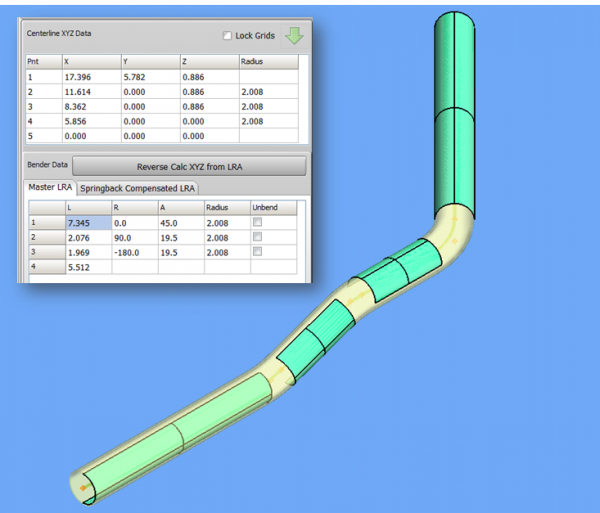Difference between revisions of "D of Bend"
(→What is D of bend?) |
|||
| Line 4: | Line 4: | ||
Tube fabricators sometimes indicate the centerline radius using D of bend. | Tube fabricators sometimes indicate the centerline radius using D of bend. | ||
| − | We say it by speaking three words: "D of bend" | + | We say it by speaking three words: "D of bend". |
| + | |||
Some tube fabricators also say "D factor" to mean the same thing. | Some tube fabricators also say "D factor" to mean the same thing. | ||
Revision as of 15:12, 2 January 2020
- Back to VTube-STEP or VTube-LASER
Contents |
What is D of bend?
Tube fabricators sometimes indicate the centerline radius using D of bend.
We say it by speaking three words: "D of bend".
Some tube fabricators also say "D factor" to mean the same thing.
It is a ratio calculated like this: Centerline Radius / OD
How Is It Used?
The D of Bend value helps fabricators know if the radius is tight or large compared to the OD. It serves as a general guide for how difficult it will be to create a quality bend. It helps fabricators know what kind of tooling will be necessary to achieve the bend.
It is also helpful for designers as a limit for what is practical.
Examples
In many applications, lower D of bend valued radii.
In the import shown above the line with LENGTH_UNIT shows this:
#815=(LENGTH_UNIT()NAMED_UNIT(*)SI_UNIT($,.METRE.));
In this line, we can change the "$" character like this:
#815=(LENGTH_UNIT()NAMED_UNIT(*)SI_UNIT(.MILLI.,.METRE.));
Then save the file, then re-import the STEP file.
Import After Fix
This is how the imported part shows now:
